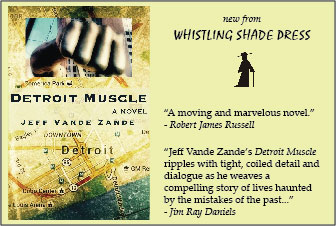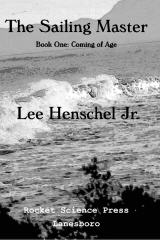
| <- Back to main page |

|
(Rocket Science Books)
High-seas adventure is a popular sub-specialty of historical fiction, with many books (like Patrick O’Brian’s Aubrey-Maturin series) set aboard sailing ships in the Napoleonic War era. Lee Henschel’s The Sailing Master is of this epoch, and the novel floats buoyantly in its time period, like a duck in water.
In 1798 Owen Harriet, the son of an impoverished farrier, is apprenticed as a cabin boy to his uncle James on board the HMS Eleanor. His first-hand narrative is a below-decks view of a British naval vessel; it is rough and violent and has very little of the upper-class pedigree, convivial conversation and affairs of honor that inhabit the romantic side of this genre. Instead we have a realistic account of a tightly ordered ship in a time of war, with seaman’s jargon so prevalent that in some places the book seems to be written in a different language. Take the orientation instructions Mr. Pogue, a scurvy midshipman, is given on Owen’s arrival:
Ajax nodded at me. “This is your new boy. Harriet. You will fit him out in slops. You will submit his name for the watch bill. You will show him where the head is and while you’re there you will enlighten him to the purpose and construction of the bowsprit. You will requisition a hammock for him and you will deliver him to me at the main fife rail before the first dog watch. Do you have time for all that in your busy schedule, Mr. Pogue?”

A sharp boy with a gift for numbers and a premonition of danger, Owen is taught to read by the Eleanor’s sailing master, Mr. Lau. He’s also assigned to attend to Gottlieb, a mysterious stranger from North Africa whose clandestine mission is to recover two horses stolen from his tribe; with the Directorate running France and General Bonaparte hoping to conquer Egypt, the British need allies in the area.
The voyage brings the Eleanor to the island of Minorca, where Owen encounters Yarda, a girl his own age:
“Owen.” I pointed to me. “Owen.”
“Owen.” She said my name tuneful and it sounded most different coming from her. She said it once more and, strange—I wanted to kiss her. I’d kissed a girl once at Newbury Fair, Rebecca. I’d not liked it much—Rebecca’s breath smelled of onions. But Yarda—she made me want to try again.
Aside from this glimpse of tenderness, The Sailing Master makes for a raw, tempestuous ride. While plenty of cannons are fired and lives are lost, there’s little symmetry or consideration for fairness in the story. A large cast of characters—about a dozen officers, ship’s crew, other boys—steer the Eleanor through a complex plot, which also involves an ancient tablet and a crafty French captain known as “the Onion”.
Beneath the surface, the novel is a bildungsroman; with its personal feeling and first-person narrative it has more in common with Joseph Conrad’s “Youth” than Master and Commander—and that’s not a bad thing. Reading the book, it’s easy to forget that The Sailing Master was actually written by a Minnesotan inhabiting the 21st century (Henschel’s poetry has previously appeared in Whistling Shade). It seems, as some great books do, to have, a life of its own, plying the literary seas quite independently from its landlubber author.
- Joel Van Valin